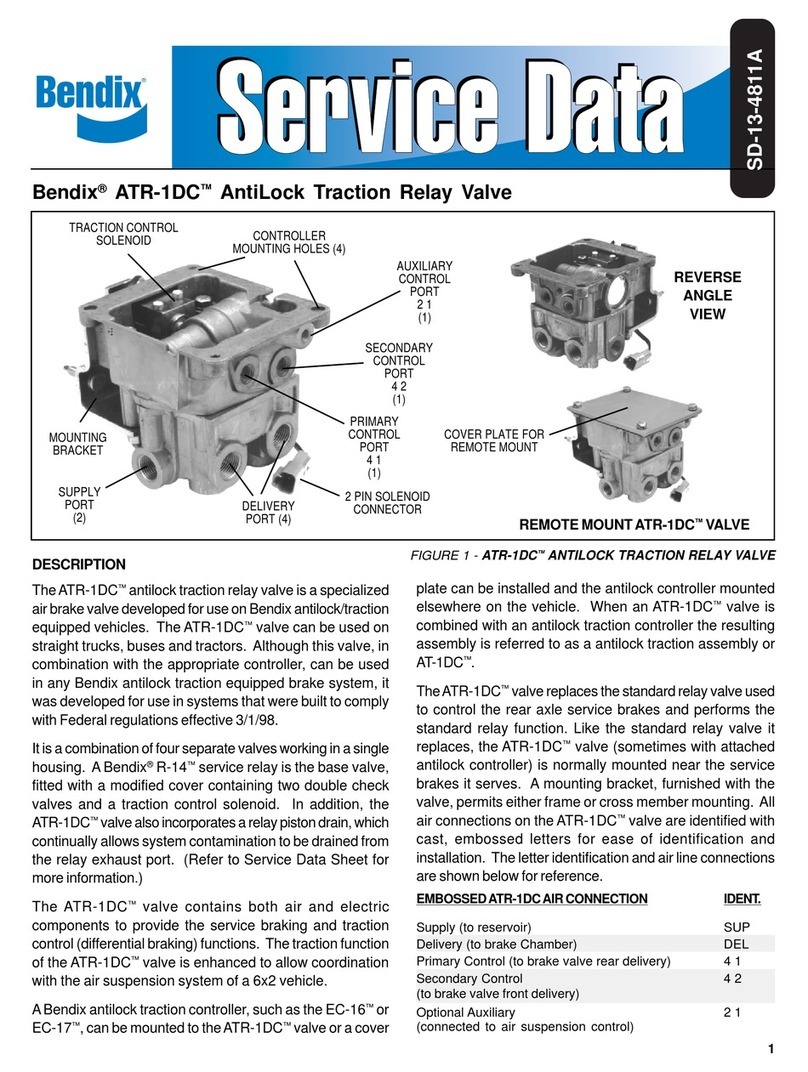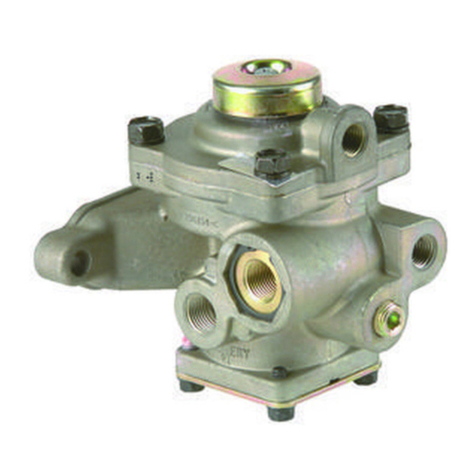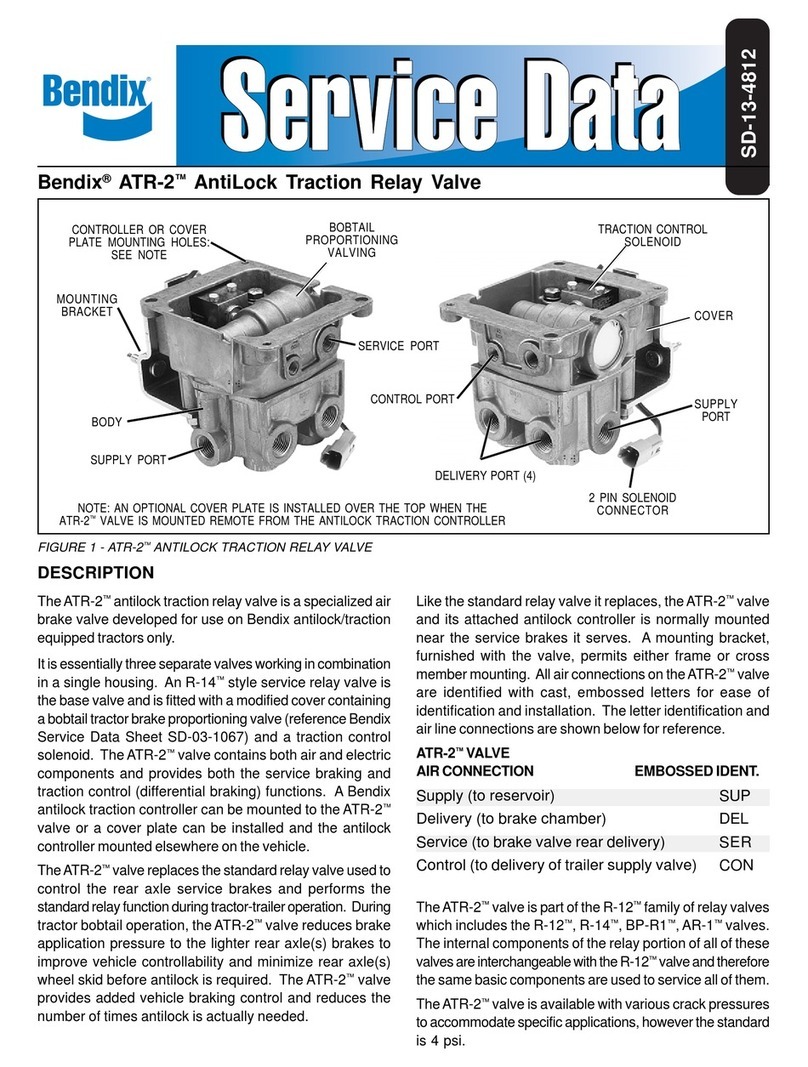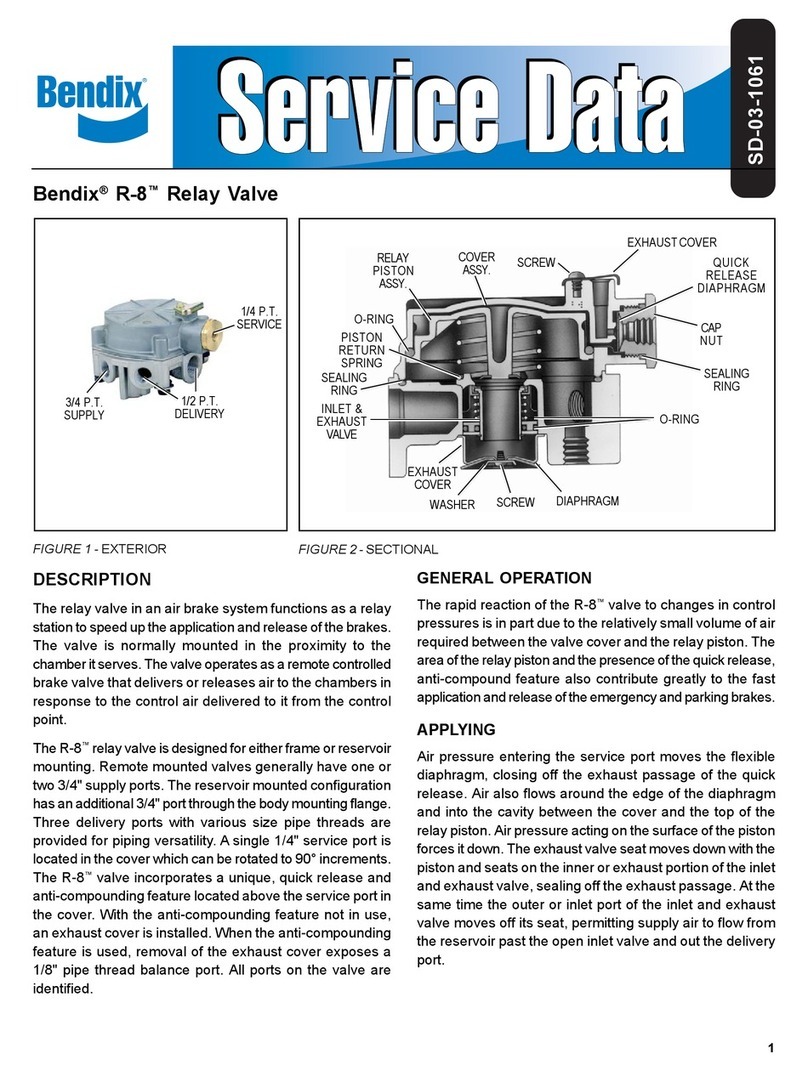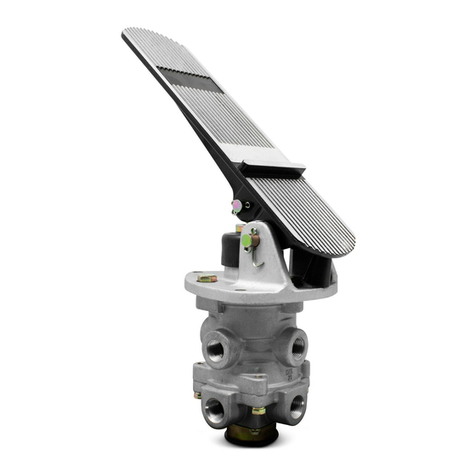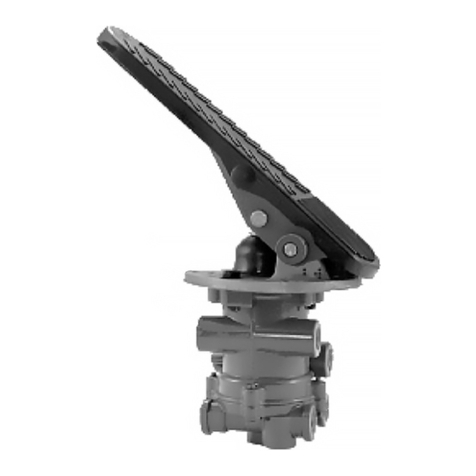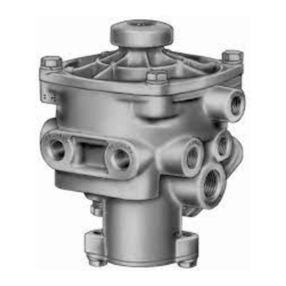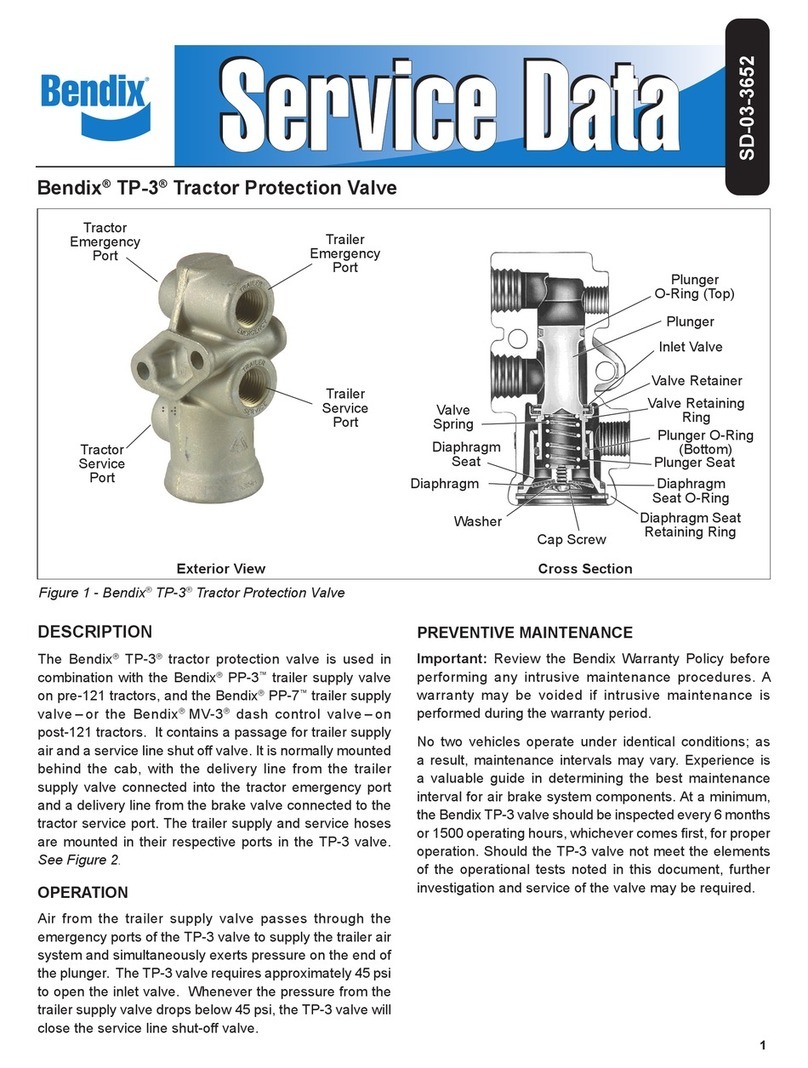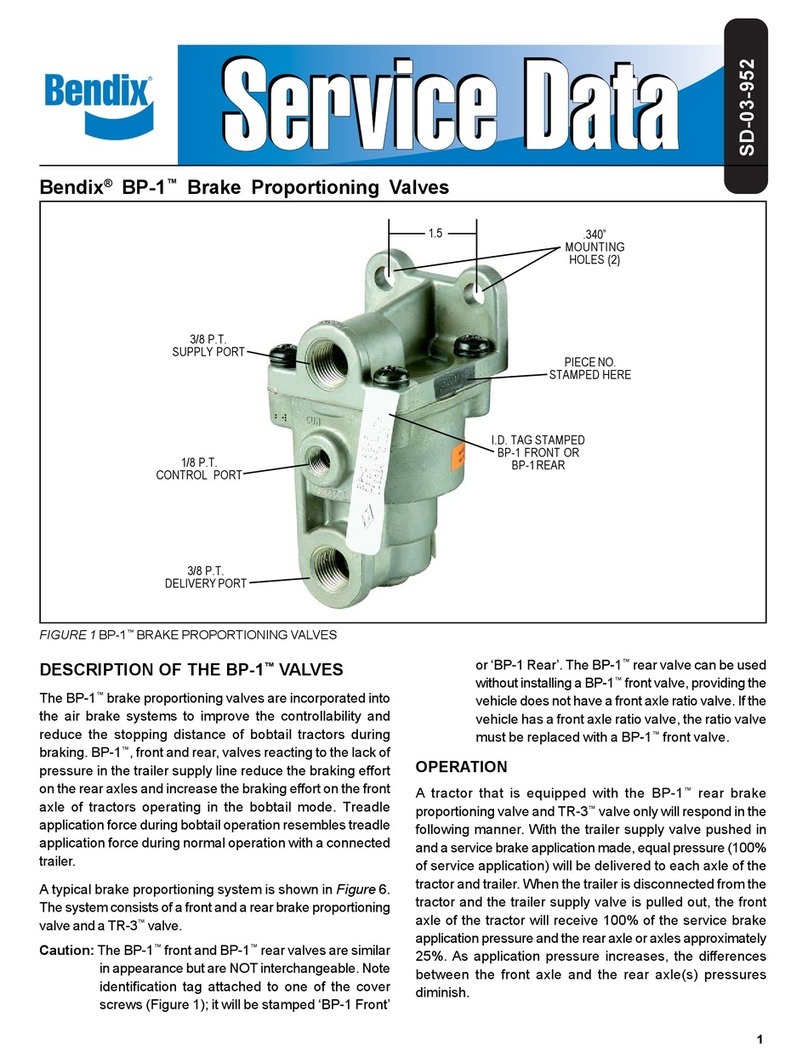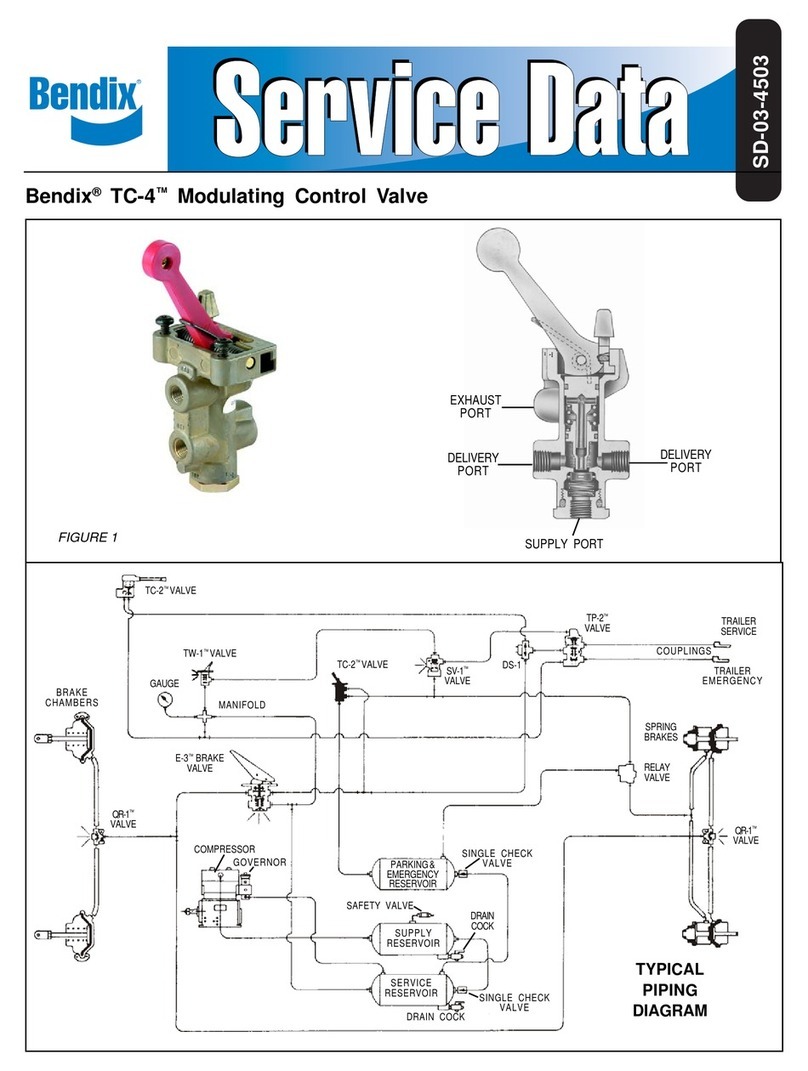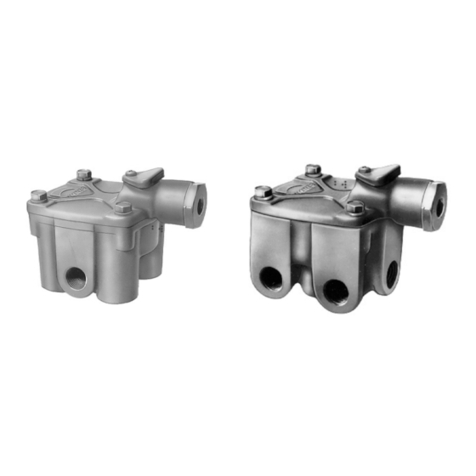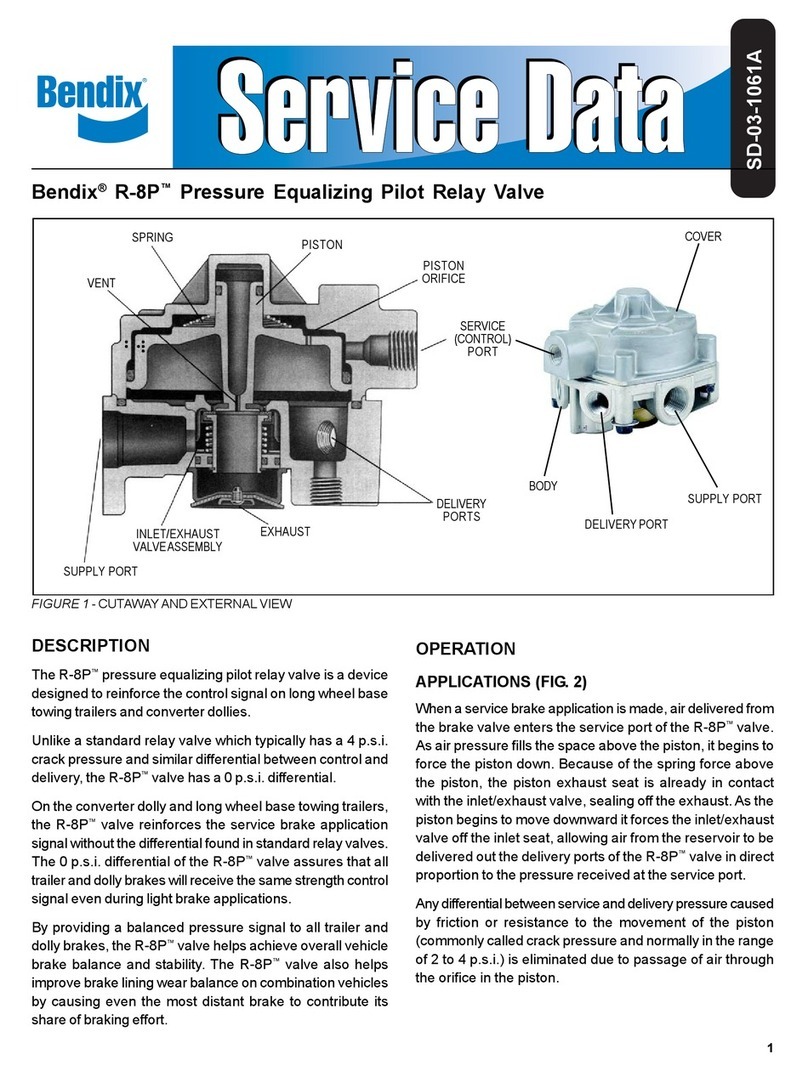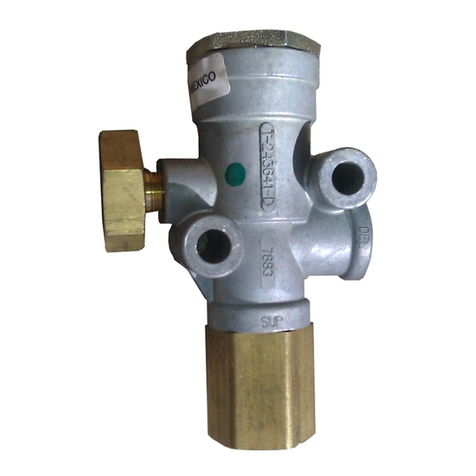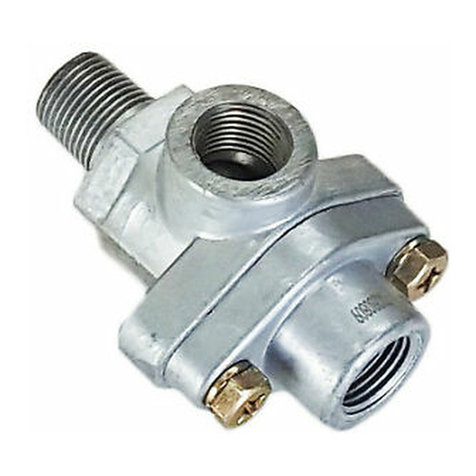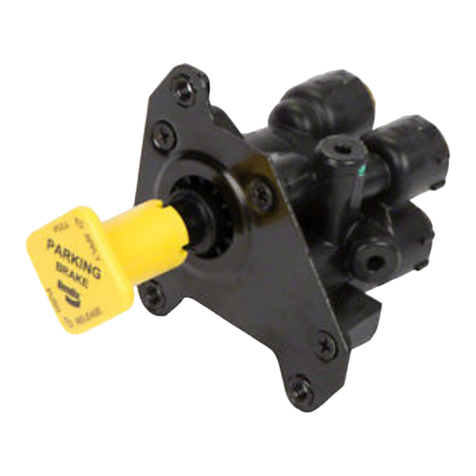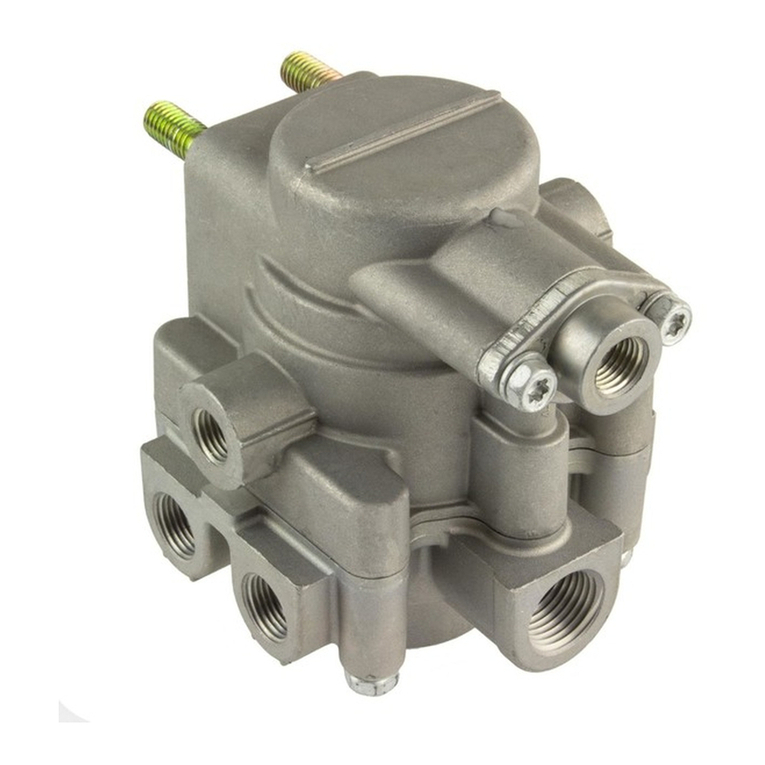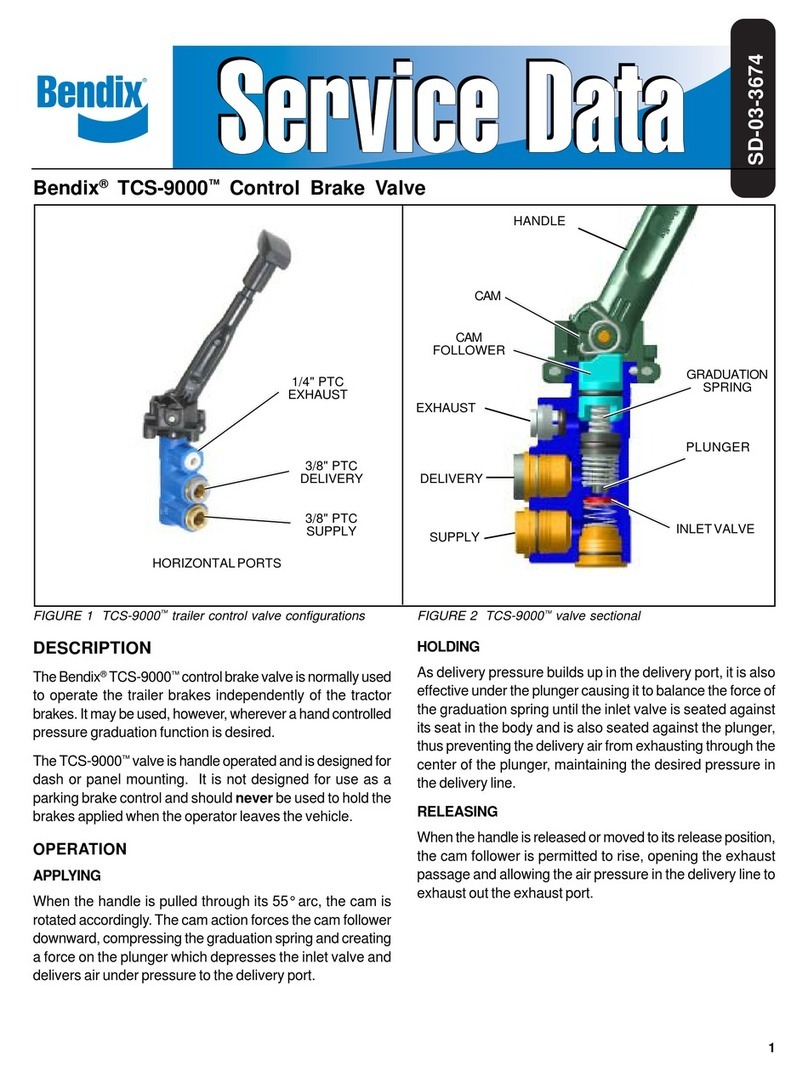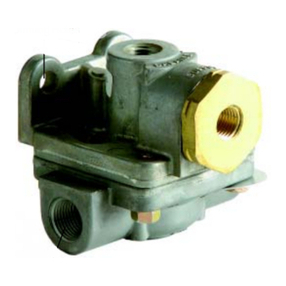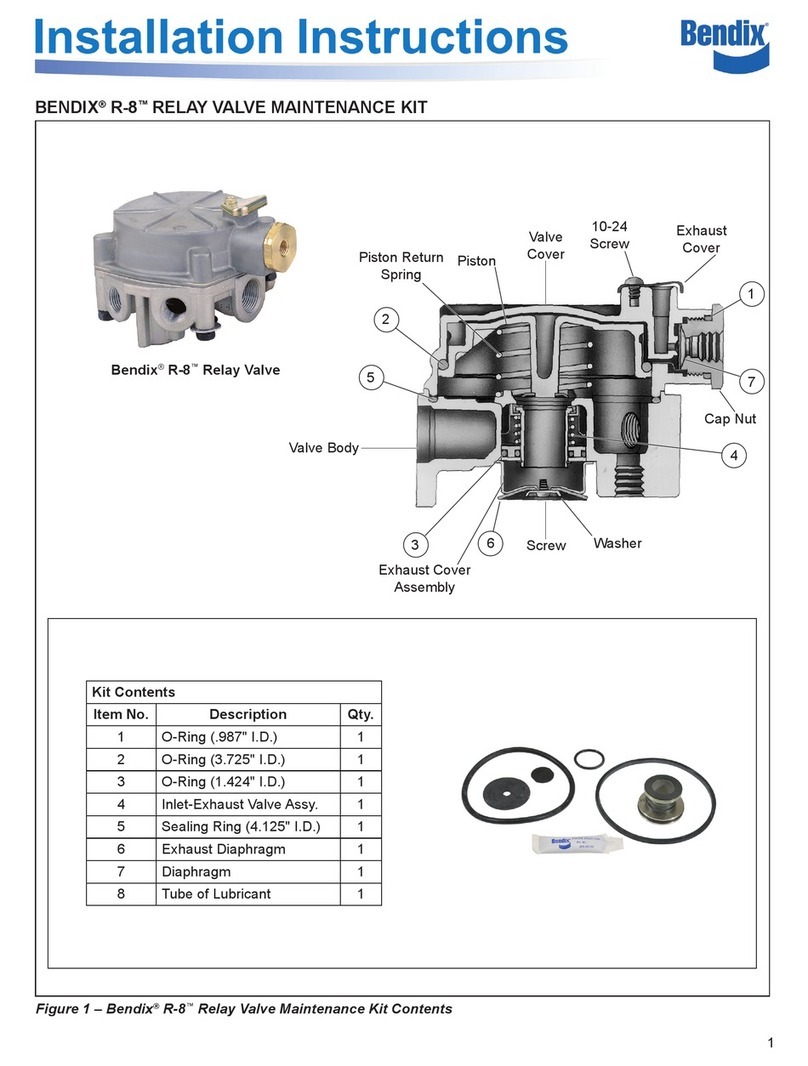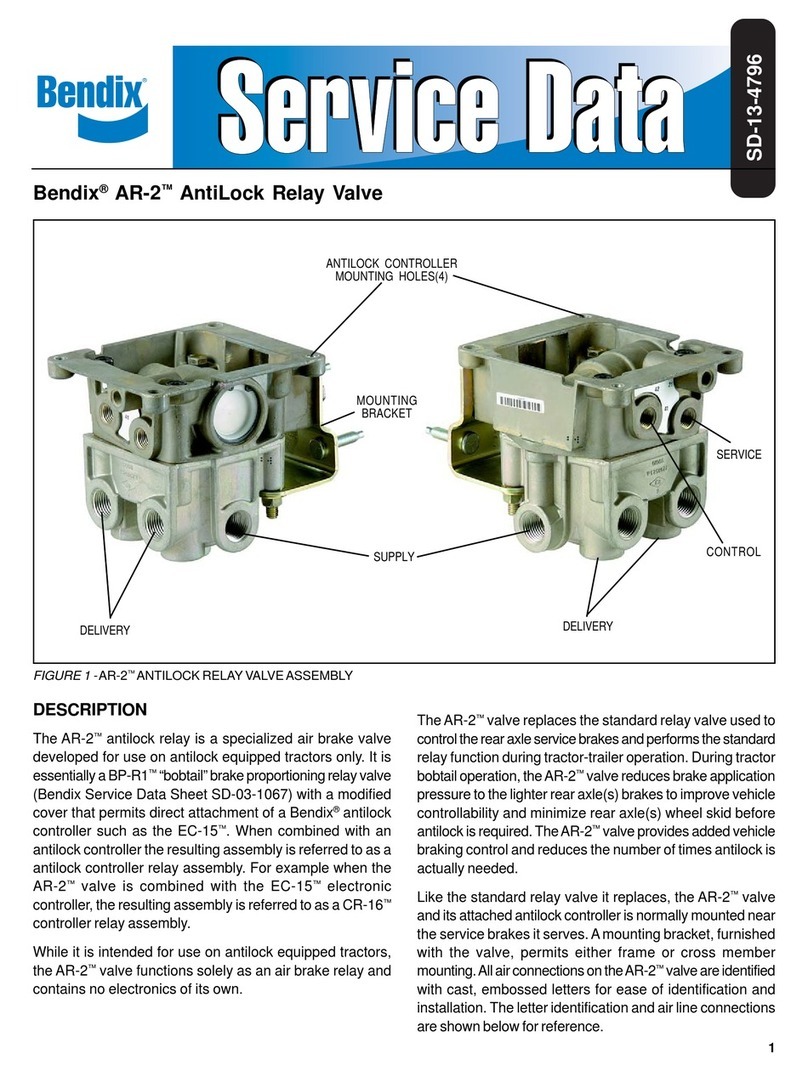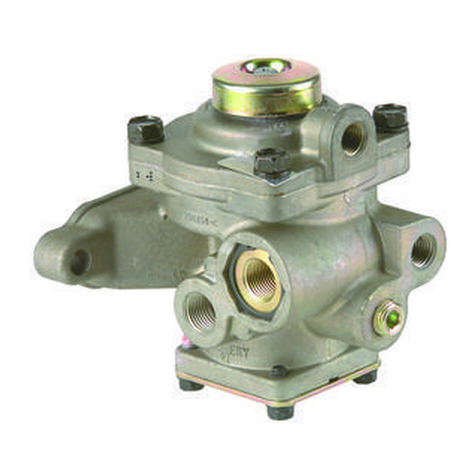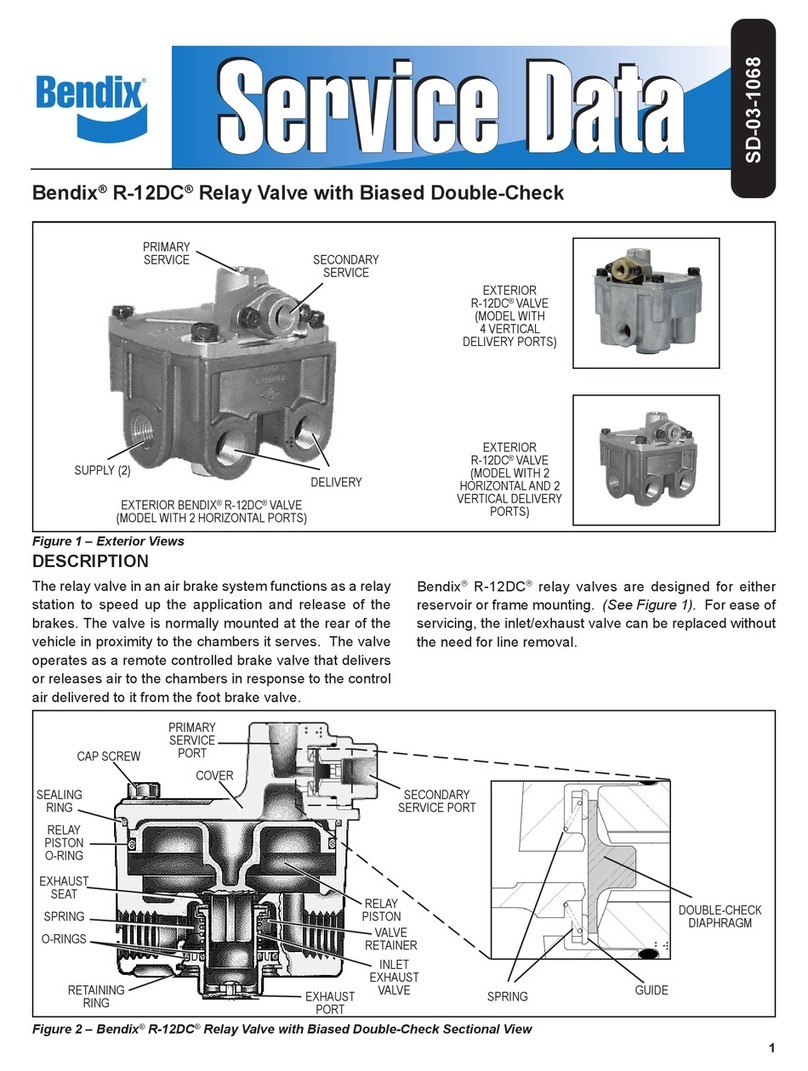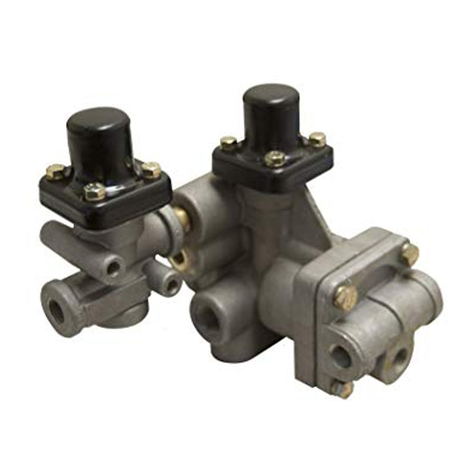
6
BW1443 © 2004 Bendix Commercial Vehicle Systems LLC. All rights reserved. 3/2004 Printed in U.S.A.
Leakageofthepush-pullvalvesmaythenbecheckedper
the chart shown on Fig. 4 and the key shown on Fig. 5.
A normal supply pressure of 100 psi at supply port P-3 is
assumedfor theseleakagetests.Leakage maybechecked
by a soap solution.
NOTE: Take care in not allowing excessive soap solution
invalve.
Theauxiliary on/offmodulemay be checkedforleakage per
chartshownon Fig. 7 and key 8, again assuminga 100 psi
supply pressure at any one of the four supply ports.
REMOVING AND REPLACING SPOOL INSERT
ASSEMBLY
Release all air pressure from the supply to the module.
Removetheretainingringfromthe cavity involved, pull out
thespool assemblyandreplacewithanewspool.Thespool
will normally be packaged with pre-lubricated o-rings;
however,shouldadditionallubricant be required,
BW-650M (Dow Corning 55-M) should be used (Bendix
piece number 291126).
The push-pull assemblies may be installed without regard
to radial orientation; however, the lever type on/off spool
assembliesmustbeinstalledwiththeoperatingleverineither
thehorizontalorverticalposition.
NOTE: Thesegmentonthebottomofthespoolmustmatch
the appropriate notch in the bottom of the cavity. If
the spool is not properly located, the retaining ring
cannotbe installed.
Ifleakagepersistsafterchangingspoolassemblies,thebody
castingmaybeatfault.Check threaded bosses for cracks.
Theinteriorwallsshouldbeexaminedcarefullyfor scratches
orgrooves,whichwouldpreventstatico-ringsonthespool
assemblyfromsealing.Ifthisconditionpersists,thecomplete
module should be replaced with genuine Bendix parts.
Replacementspool assemblies or nonfunctional plugs are
availableatauthorizedBendixpartsoutlets.
WARNING! PLEASE READ AND FOLLOW
THESE INSTRUCTIONS TO AVOID
PERSONAL INJURYOR DEATH:
When working on or around a vehicle, the following
general precautions should be observed at all times.
1. Park the vehicle on a level surface, apply the
parking brakes, and always block the wheels.
Always wear safety glasses.
2. Stop the engine and remove ignition key when
working under or around the vehicle. When
working in the engine compartment, the engine
should be shut off and the ignition key should be
removed. Where circumstances require that the
enginebe in operation,EXTREME CAUTION should
be used to prevent personal injury resulting from
contact with moving, rotating, leaking, heated or
electrically charged components.
3. Do not attempt to install, remove, disassemble or
assemble a component until you have read and
thoroughly understand the recommended
procedures. Useonly the proper toolsand observe
all precautions pertaining to use of those tools.
4. If the work is being performed on the vehicle’s air
brake system, or any auxiliary pressurized air
systems,make certainto drainthe airpressure from
all reservoirs before beginning ANY work on the
vehicle. If the vehicle is equipped with an AD-IS™
air dryer system or a dryer reservoir module, be
sure to drain the purge reservoir.
5. Following the vehicle manufacturer’s
recommendedprocedures, deactivate the electrical
system in a manner that safely removes all
electrical power from the vehicle.
6. Never exceed manufacturer’s recommended
pressures.
7. Never connect or disconnect a hose or line
containing pressure; it may whip. Never remove a
component or plug unless you are certain all
system pressure has been depleted.
8. Use only genuine Bendix®replacement parts,
components and kits. Replacement hardware,
tubing, hose, fittings, etc. must be of equivalent
size, type and strength as original equipment and
be designed specifically for such applications and
systems.
9. Components with stripped threads or damaged
parts should be replaced rather than repaired. Do
not attempt repairs requiring machining or welding
unless specifically stated and approved by the
vehicle and component manufacturer.
10. Prior to returning the vehicle to service, make
certain all components and systems are restored
to their proper operating condition.
